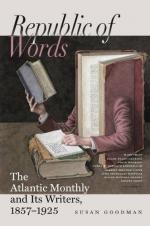[Footnote K: Sewell’s Ordeal of Free Labor, etc.]
Of GUIANA, a resident writes,—“The portion of the native population which in other countries constitutes the working class is estimated here at 70,000 souls. They present the singular spectacle, which we can contemplate in no other part of the world, of a people hardly escaped from slavery, enjoying already properties in land and houses for which they have paid nearly L100,000.”
In a single county, (Berbice,) says Cochin, there had been built in 1843, since emancipation, 1184 houses, and 7,000 additional acres had been put under cultivation. In the whole colony there were 15,906 landed proprietors among the negroes who had become such since 1834. The imports, according to Lord Stanley, during the last six years of slavery, were about $13,915,000; during apprenticeship, about $17,890,000; in the first year of liberty, over $20,000,000; in the second year, about $17,463,670.
* * * * *
We have given, perhaps, a rather dry account of the effects of emancipation on a portion of the British West Indies. But it should be remembered that this question, as it now stands before the world, is mainly a question of figures. The great and damning argument against emancipation is the supposed experience of the West Indies, that the negro will not work except under slavery. The evidences of labor are in part given by figures: the number of freeholds, the price of land, the amount of the productions, the quantity consumed, and the quantity exported. The amount of imports, too, shows the desire and the means of the people to procure foreign commodities. By these plain and irrefutable evidences, we have proved that free labor in the Windward Islands, Trinidad, the Leeward Islands, and Guiana has “paid” much better than slave labor.
As Mr. Sewell has summed it up with reference to four colonies,—British Guiana, Barbadoes, Trinidad, and Antigua,—the total annual export of sugar before emancipation was 187,300,000 pounds, while now it is 265,000,000 pounds; showing an advantage under free labor of seventy-seven million, seven hundred thousand pounds! The total imports of the same colonies amounted before emancipation to $8,840,000; they are now $14,600,000; showing an excess of imports under free labor, as compared with slave labor, of the value of five million, seven hundred and sixty thousand dollars!
It is a remarkable experience of the West Indies, to be seriously considered in the settlement of our American problem, that the islands which abolished slavery the most summarily and entirely succeeded the best after emancipation. Half-freedom, both there, and in Russia during the last year, has proved a source of jealousy to the freedman and of annoyance to the master, and ultimately, in the West Indies, interfered with production, and the permanent welfare of the islands.




